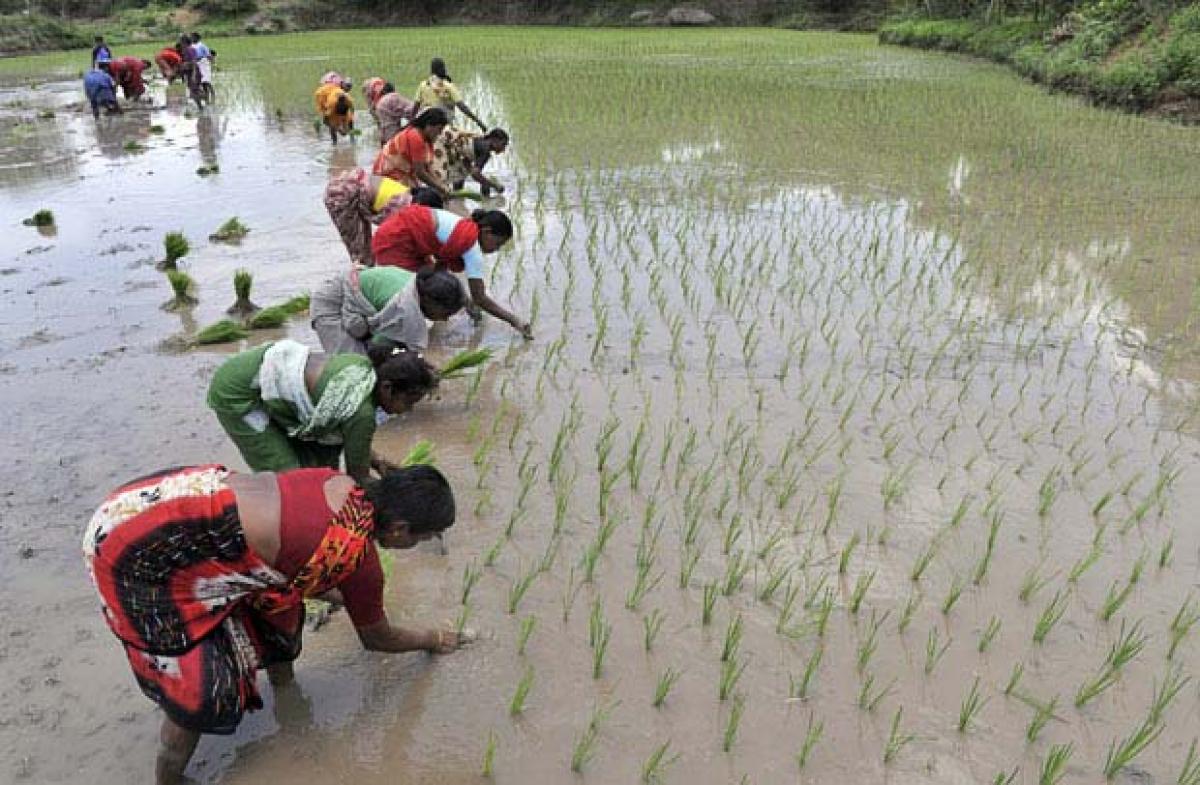Live
- GMR Airports Unveils AI-Powered Digital Twin Platform to Transform Airport Operations
- India poised to become leading maritime player: PM Modi
- Top Causes of Kidney Stones and How to Recognize Silent Symptoms
- India’s renewable energy capacity logs 14.2 pc growth at 213.7 GW
- Winter Session of Odisha Assembly adjourned sine die
- Biden calls Trump's tariff approach 'major mistake'
- After Drama Over Eknath Shinde’s Chief Minister Race, Maharashtra Cabinet Formation Faces New Tensions
- Egyptian FM, Blinken discuss recent developments in Syria
- Iran's supreme leader says Syria's developments result of US-Israeli 'plot'
- Elon Musk to Purchase $100 Million Luxury Mansion Next to Donald Trump's Mar-a-Lago, Report Reveals
Just In

The India Meteorological Department’s (IMD’s) prediction of a copious monsoon this year should bring relief to everyone, particularly farmers, as they come after two years of inadequate rain resulting in a severe drought in many parts of the country.
An above normal monsoon likely for first time since 1999
The India Meteorological Department’s (IMD’s) prediction of a copious monsoon this year should bring relief to everyone, particularly farmers, as they come after two years of inadequate rain resulting in a severe drought in many parts of the country.
Undeniably, the economic, social and human impact of the drought is still in full play, with suicide, misery and destitution sweeping over families in villages. Hopefully, a bountiful monsoon would change this sorrowful scene and act like an elixir for the country’s economy.
Appropriately, the Met office has predicted an above normal monsoon for the first time since 1999, which is 6 per cent more than the long period average (LPA) of 89 cm. Some private weather forecasters too have predicted a better than average monsoon this year, which supports the IMD’s reading.
Keeping a close watch on the expected monsoon this year and how it would possibly affect the farming community, the Climate Prediction Centre of the National Oceanic and Atmospheric Administration (NOAA) has stated that El Nino, which typically peaks in January and February is set to weaken by June, thereby raising hopes for a normal monsoon.
According to meteorologists, another trend noticed after an El Nino year is La Nina condition, which leads to improved rain movement “This year, better rainfall activity is predicted,” said World Meteorological Organisation (WMO) member JV Kulkarni, adding: “Over the last 43 years, it has been observed that there have been six instances wherein La Nina has followed El Nino the very next year, leading to improvement in rainfall.”
As India faces a prospect of a good monsoon, the country would have to be ready to face some imponderables also. The IMD expects the rainfall to be well distributed nationally. As it stands, even an above normal rainfall might not always give the best results viz-a-viz the farming front. The spatial and temporal distribution of rain is crucial in this respect.
Further, an above average national rainfall might not mean that the best farming regions or States would get good rainfall or that all farms would get rain at the right time. Given that it is necessary to provide for such eventualities. Pertinently, the IMD has not yet developed the expertise to make predictions at the micro level, which would actually be more useful for farmers.
Apart from the chances of a good monsoon, there are other indicators of a turnaround in the economy. Notably, there is a fall in inflation and industrial production has increased. The Reserve Bank of India has helped with an interest rate cut whereby agriculture does not contribute much to the national economy and the GDP now, despite India being an agricultural economy and a large number of people are dependent on it.
Consequently, this makes monsoon behaviour a major economic factor. Add to this, more effective prediction facilities, better irrigation and water conservation projects and changes in crop patterns are needed to manage the monsoon better.
We might therefore see some improvement in agriculture growth rates to 2.8 per cent in 2016-17, 1.1 per cent in 2015-16 and over the minus 0.2 per cent in 2014-15 respectively, provided the forecast by Weather Risk Management Services turns out correct and the farm sector responds to an abundant monsoon.
Recall, Finance Minister Arun Jaitley last week asserted that India’s economic growth this year could blow past estimates and tick up to as much as 8.5 percent. Part of this GDP boost is being attributed to predictions of a good monsoon this year after a below normal rainfall in 2014 and 2015 which had one-third of the country battling a severe drought.
Interestingly, since erratic weather has become the new normal, it calls for a technology as well as policy response. The first entails developing more short-duration varieties, as well as strains that are resistant to floods, high temperatures or drought. At a policy level, a price stabilisation fund, comprehensive crop insurance and water conservation measures are crucial.
All in all, the forecast of a bountiful monsoon would lift economic sentiments across the board. If retail inflation is under control, this would further contain inflationary expectations setting the tone for a further rate cut. A pick-up in agriculture, along with the Seventh Pay Commission award, might help revive the investment cycle disrupted by debt and poor overall demand after more than four years, if the RBI is willing to oblige.
By Dr PK Vasudeva

© 2024 Hyderabad Media House Limited/The Hans India. All rights reserved. Powered by hocalwire.com







